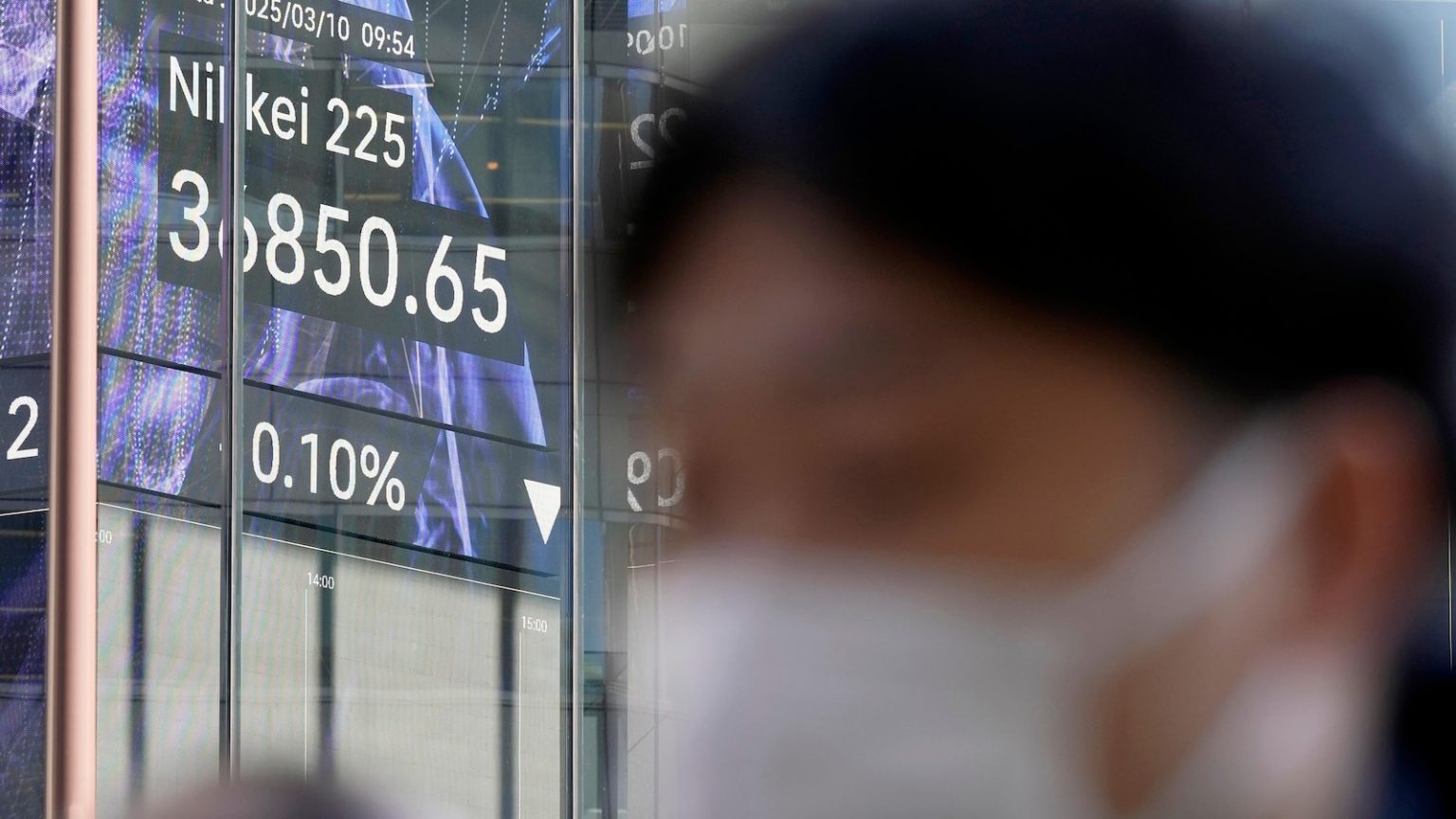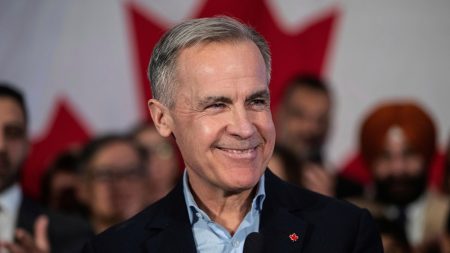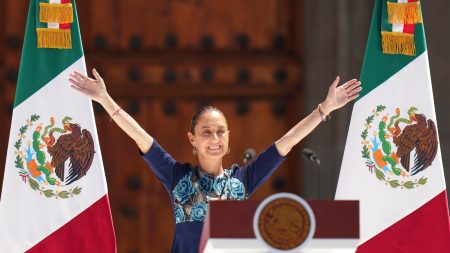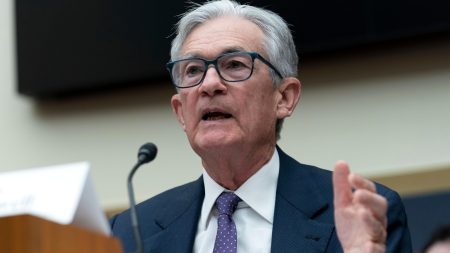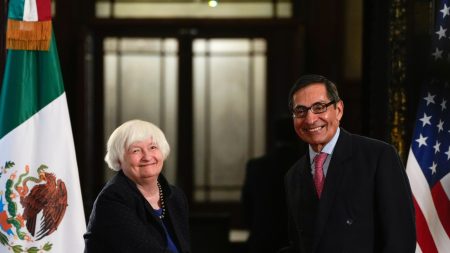###.Global Markets Face Volatility Amidst Trade Uncertainty and Economic Shifts
The global markets kicked off the week on a mixed note, with stocks in Asia experiencing a rocky start as uncertainty surrounding President Donald Trump’s tariff policies persisted. U.S. futures dipped, and oil prices also fell, signaling ongoing unease among investors. The markets in China led the decline, with Hong Kong’s Hang Seng index dropping 2.1% to 23,720.26, while the Shanghai Composite index shed 0.6% to 3,352.59. This downward trend was further exacerbated by the release of weaker-than-expected economic data, as China’s consumer prices fell in February for the first time in 13 months. This decline was attributed to sluggish demand and the earlier-than-usual Lunar New Year holiday, which disrupted economic activity. The weak consumer price index (CPI) data raised concerns about the health of the world’s second-largest economy, adding to the broader anxiety in global markets.
### Japan and South Korea Show Resilience While Others Struggle
While China’s markets struggled, Japan’s Nikkei 225 managed to edge 0.1% higher, closing at 36,936.39. This modest gain came amid ongoing diplomatic efforts to avoid U.S. tariffs on Japanese exports of steel, aluminum, and automobiles. Japan’s trade minister, Yoji Muto, was in Washington for talks aimed at finding a “win-win” solution for both countries. Muto emphasized the need to consider the voices of the industrial sector, suggesting that Japan is seeking a balanced approach to the negotiations. Meanwhile, Commerce Secretary Howard Lutnick confirmed that 25% tariffs on steel and aluminum imports would take effect on Wednesday, adding pressure to the discussions.
Elsewhere in the region, South Korea’s Kospi gained 0.4% to close at 2,574.90, and Australia’s S&P/ASX 200 rose 0.2% to 7,966.40. However, Taiwan’s Taiex slipped 0.4%, and Bangkok’s SET index dropped 1.1%, reflecting the uneven performance across Asian markets. These mixed results underscored the broader uncertainty gripping global trade and economies, as investors grappled with the implications of U.S. tariffs and shifting economic dynamics.
### Wall Street Sees a Volatile Week but Ends on a Positive Note
On Wall Street, the week ended on a positive note after a tumultuous period marked by significant market swings. The S&P 500 climbed 0.6% to 5,770.20, recovering from earlier losses that had dipped as low as 1.3%. The Dow Jones Industrial Average also gained 0.5% to 42,801.72, while the Nasdaq composite rose 0.7% to 18,196.22. Despite this rebound, the S&P 500 still experienced its worst week since September, closing about 6% below its all-time high reached last month. The volatility was fueled by concerns about the U.S. economy and the unpredictable nature of Trump’s tariff policies, which have created an environment of uncertainty for businesses and investors alike.
Federal Reserve Chair Jerome Powell provided some reassurance on Friday, stating that the U.S. economy appears stable and that there is no immediate pressure to cut interest rates. “The costs of being cautious are very, very low,” Powell remarked, signaling a wait-and-see approach. His comments helped ease some of the market jitters, but the underlying concerns about the economy’s resilience remain.
### U.S. Employment Data Shows Mixed Signals
The U.S. Labor Department’s latest jobs report added to the mixed economic picture. Employers added 151,000 jobs in February, slightly below economists’ expectations but still an improvement from the previous month. While this data suggested that the labor market remains robust, it also hinted at potential underlying weaknesses. Recent surveys have shown declining confidence among U.S. businesses and households, partly due to the uncertainty surrounding Trump’s tariff policies. Economists are closely monitoring whether this erosion in confidence will translate into broader economic pain, particularly in the job market. The administration’s unpredictable approach to trade—imposing tariffs on some trading partners, then exempting others, and reversing course again—has created a chaotic environment for businesses. This unpredictability has led to fears that companies may freeze hiring or investment decisions, further slowing economic growth.
### Tariffs, Inflation, and Consumer Spending: A Perfect Storm of Uncertainty
President Trump’s tariff policies continue to cast a long shadow over the global economy. The administration’s stated goal of using tariffs to bring jobs back to the U.S. has been met with skepticism, as the measures have led to higher costs for businesses and consumers. U.S. households are bracing for inflationary pressures, which could dampen consumer spending and further weaken economic momentum. With no clear end in sight to the trade uncertainty, financial markets remain on edge, seeking clarity and stability in a landscape dominated by unpredictable policy decisions.
In other news, Walgreens Boots Alliance saw its stock surge 7.5% after announcing that it would be acquired by private equity firm Sycamore Partners. The deal, which would take the pharmacy chain private for the first time since 1927, is seen as an opportunity for the company to restructure and adapt to changing market conditions without the pressure of public market scrutiny. Meanwhile, oil prices continued to slide, with U.S. benchmark crude falling to $66.66 per barrel and Brent crude dropping to $70.01 per barrel. The U.S. dollar also weakened slightly against the yen, trading at 147.72, while the euro dipped to $1.0831. As the global economy navigates this period of uncertainty, all eyes remain on the White House and the potential actions that could shape the trajectory of trade and growth in the months ahead.





